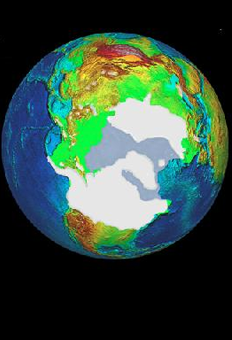NOAA/WDS Paleoclimatology - Circum-North Atlantic Area Air Temperature Reconstructions Derived from Tree-ring Maximum Latewood Density Data from 760 to 2017 CE
This archived Paleoclimatology Study is available from the NOAA National Centers for Environmental Information (NCEI), under the World Data Service (WDS) for Paleoclimatology. The associated NCEI study type is Climate Reconstruction. The data include parameters of climate reconstructions|tree ring with a geographic location of Northern Europe. The time period coverage is from 3140 to -67 in calendar years before present (BP). See metadata information for parameter and study location details. Please cite this study when using the data.
- Cite as: Wang, F.; Arseneault, D.; Boucher, E.; Gennaretti, F. (2023-05-15): NOAA/WDS Paleoclimatology - Circum-North Atlantic Area Air Temperature Reconstructions Derived from Tree-ring Maximum Latewood Density Data from 760 to 2017 CE. [indicate subset used]. NOAA National Centers for Environmental Information. https://doi.org/10.25921/tsdv-n421. Accessed [date].
- Please refer to Credit tab for full citation information.
- doi:10.25921/tsdv-n421
- noaa-recon-38080
- NCEI DSI 1200_02
- NCEI DSI 1200_01
noaa-recon-38080
| Search Data |
|
| Download Data |
|
| Distribution Formats |
|
| Ordering Instructions | Contact NCEI for other distribution options and instructions. |
| Distributor | NOAA National Centers for Environmental Information
ncei.info@noaa.gov |
| Dataset Point of Contact | NOAA National Centers for Environmental Information
ncei.info@noaa.gov |
| Dataset Point of Contact | Data Center Contact
NOAA World Data Service for Paleoclimatology 828-271-4800 paleo@noaa.gov |
| Coverage Description | Date Range: -1190 CE to 2017 CE; Date Range: 3140 cal yr BP to -67 cal yr BP; |
| Time Period | -1190 to 2017 |
| Spatial Bounding Box Coordinates |
N: 70
S: 40
E: 30
W: -77
|
| Spatial Coverage Map | |
| General Documentation |
|
| Associated Resources |
|
| Publication Dates |
|
| Data Presentation Form | Digital table - digital representation of facts or figures systematically displayed, especially in columns
|
| Dataset Progress Status | Complete - production of the data has been completed |
| Data Update Frequency | Data update frequency not available |
| Supplemental Information |
STUDY NOTES: Millennial May–August temperature reconstructions using tree-ring maximum latewood density data for Eastern Canada, Northern and Central Europe.
ABSTRACT SUPPLIED BY ORIGINATOR: Summer cooling is one of the most direct consequences of explosive volcanic eruptions that can affect ecosystems and human societies. Recent studies revealed a multi-year cooling impact on hemispheric and global summer temperatures after tropical eruptions, yet, the volcanic responses appear to vary on regional scales. Here, we revisit volcano-induced summer cooling in Eastern Canada, Northern and Central Europe by applying superposed epoch analysis on CMIP6-PMIP4 simulations and millennial temperature reconstructions based on tree-ring density. We then examine potential causes modulating region-specific volcanic impact. While confirming that, on average, tropical eruptions over the last millennium have induced a longer cooling (> 4 years) than eruptions from extratropical Northern Hemisphere in all three North Atlantic regions, we show that the peak magnitude of cooling is stronger in Eastern Canada. We also find that the detected volcanic temperature anomalies can be strongly affected by the selection and number of volcanic events and non-volcanic signals embedded in the climate time series. This study highlights the risks of using highly noisy proxy records to investigate volcanic impacts, especially in regions with strong unforced climate variability. The CMIP6-PMIP4 simulations generally agree with the three reconstructions on the average response to tropical eruptions, but their performance is poorer regarding the production of significant cooling after extratropical eruptions. Our results further suggest that the particular sensitivity to tropical eruptions in Eastern Canada is likely related to increased sea ice surrounding Quebec-Labrador associated with the positive Arctic Oscillation and North Atlantic Oscillation formed during the first post-eruption winter. |
| Purpose | Records of past temperature, precipitation, and other climate variables derived from paleoclimate proxies. Parameter keywords describe what was measured in this data set. Additional summary information can be found in the abstracts of papers listed in the data set citations. |
| Dataset Citation |
|
| Cited Authors |
|
| Originators |
|
| Publishers |
|
| Theme keywords | Global Change Master Directory (GCMD) Science Keywords
|
| Data Center keywords | Global Change Master Directory (GCMD) Data Center Keywords
|
| Place keywords |
|
| Use Constraints |
|
| Access Constraints |
|
| Fees |
|
Last Modified: 2023-09-01
For questions about the information on this page, please email: ncei.info@noaa.gov
